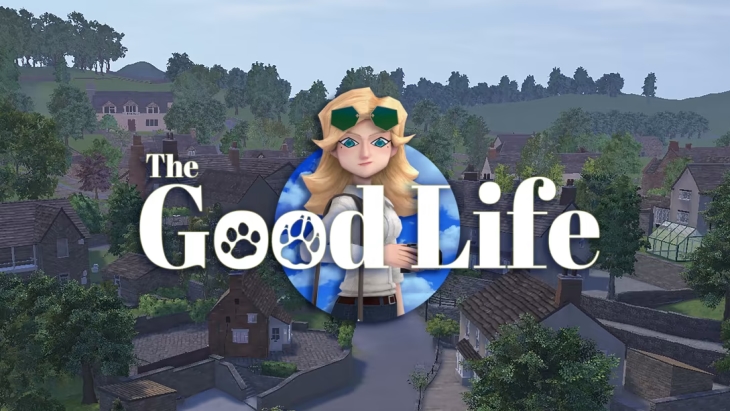
After abandoning D4: Dark Dreams Don’t Die, Hidetaka Suehiro left Access Games to strike it out with his own game studio, White Owls. His first outing was The Missing: J.J. Macfield and the Island of Memories; his take on the “cinematic platformer,” but with a psychological-horror, transgender twist.
It was an interesting mix of Wario Land style self-harm and puzzle platforming; but was woefully unpolished, buggy, and extremely sloppy.
Deadly Premonition 2: A Blessing in Disguise, the hotly anticipated sequel to the game that made a name for Swery followed, and was the biggest disappointment of 2020. Shambling into release on the Nintendo Switch, it was a backwards-designed incoherent mess, that suffocated players with load times.
While Swery made two strike outs in a row, he was in the middle of a Kickstarter campaign for a photography RPG set in a ye olde English country town. The Good Life had a ton of red flags surrounding it. Between the string of failures surrounding him and a shaky looking crowdfunded game on Switch, would The Good Life be Swery’s third miss and strike-out completely?
The Good Life
Developer: White Owls
Publisher: PLAYISM
Platforms: Windows PC, Nintendo Switch (reviewed), Xbox One, PlayStation 4
Release Date: October 15, 2021
Players: 1
Price: $39.99 USD
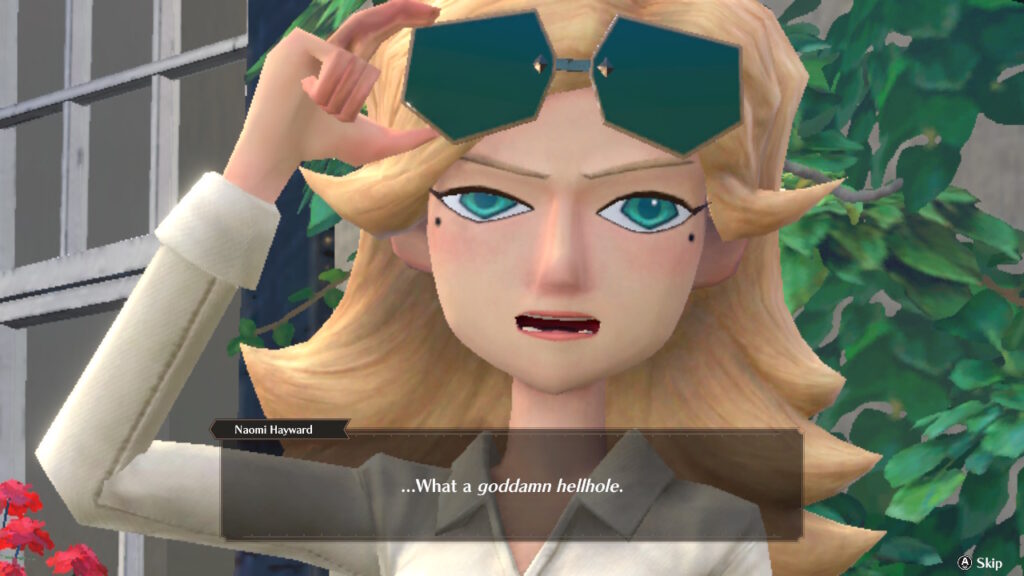
Naomi Hayward is a typical stuck up, New Yorker, childless female professional; who is in massive debt. Like many yuppies of the modern era, she looks down upon the simplicity of country life. The Good Life is her ultimate test of character, and to pay off her ridiculous debt she finds herself in an old English country hamlet known as Rainy Woods.
A little bit like Animal Crossing and Deadly Premonition with some Harvest Moon; The Good Life will force Naomi to adapt to survive for the first time in her meaningless and shallow life. Her assignment began with simply taking shots; but when she is the is the first to discover the body of one of the locals, she gets roped into a town-wide murder mystery.
There are a lot of suspects and various routes to take when it comes to solving the enigmas that surround Rainy Woods. On top of the mystery of who killed Elizabeth Dickens and how to make a meat pie, Naomi has to work out why everyone turns into cats and dogs at night.
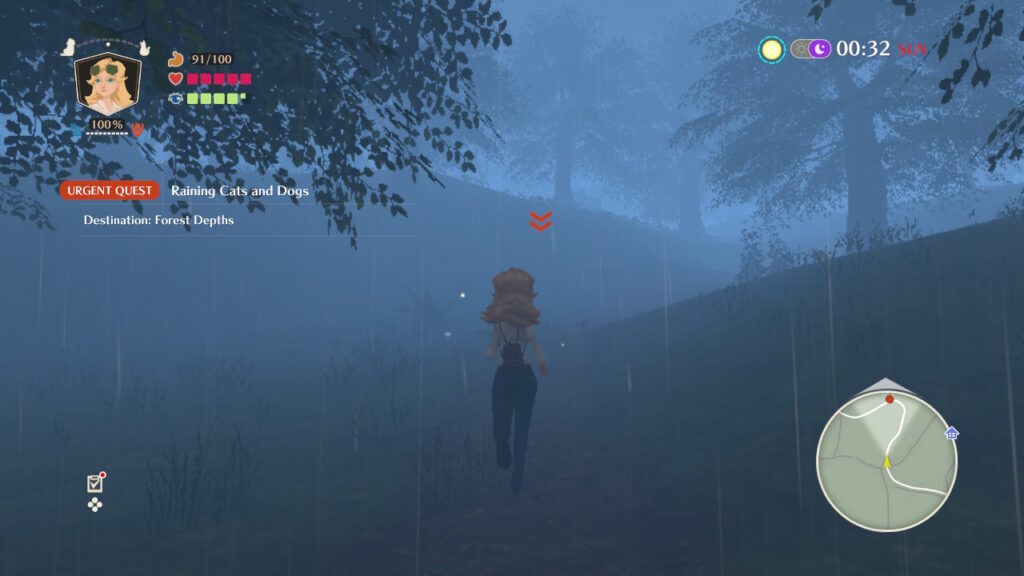
The Good Life is an eclectic mixture of genres; but if there was anything it focuses heavily on, it’s role-playing and resource management. Naomi has to do all kinds of odd jobs and errands for the townsfolk if she wants to make her stay more comfortable, and to work on her Flamingo social media profile if she wants to be rolling in green.
Important townies have a unique design and are named. These are the critical figures in the main story and mystery, or operate one of the major amenities in the town square. A lot of these characters will have a string of side quests attached to them, which varies from taking pictures of certain things, or finding some items in the vast open world.
While it may seem unimaginative, the fetch quests in The Good Life are more involving than in most RPGs. The simulation elements come into play when it comes to exploring and traversing the rolling hills and cobblestone roads of this obscure hamlet. Naomi can’t just aimlessly walk in any direction and get what she needs like in Skyrim or Far Cry; she has to be prepared like Sam Porter Bridges in Death Stranding.
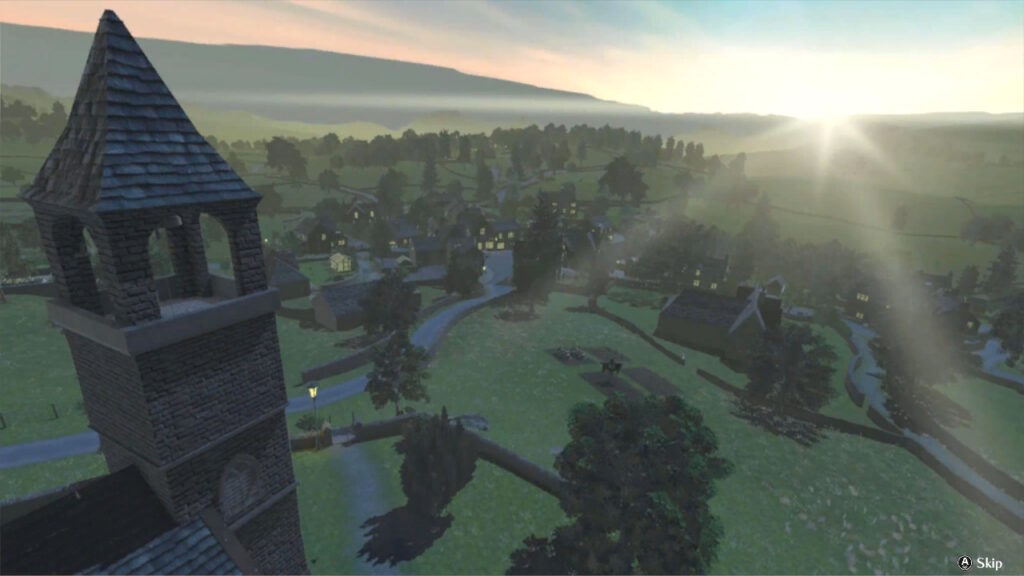
Having enough cash on hand is important for paying toll gates, but it’s not a good idea to carry all of Naomi’s stash. She can lose a big chunk of it, should she have a bad time while getting jumped by a bear or an ill-tempered badger.
Maintaining stamina is done by eating snacks or by using an outdoor kitchen (for a nominal fee) to cook up meals that can not only satisfy hunger pangs, but can also boost other stats. Thankfully, Naomi has many other ways to feed herself without going to her rightful place in the kitchen.
As touched on earlier, the denizens of Rainy Woods all become cats or dogs late in the evenings. Naomi earns the ability to transform into either cat or dog at the player’s will, and both have their benefits when exploring Rainy Woods.
Dog-Naomi has much higher stamina, and can run for long distances before having to catch her breath. Rummaging in trash bins nets all kinds of useful materials. These can be used by the local tailor or blacksmith to craft different pieces of equipment or clothes with differing stats. Dog-Naomi is also how most threats are dealt with, but the execution is very bare-bones.
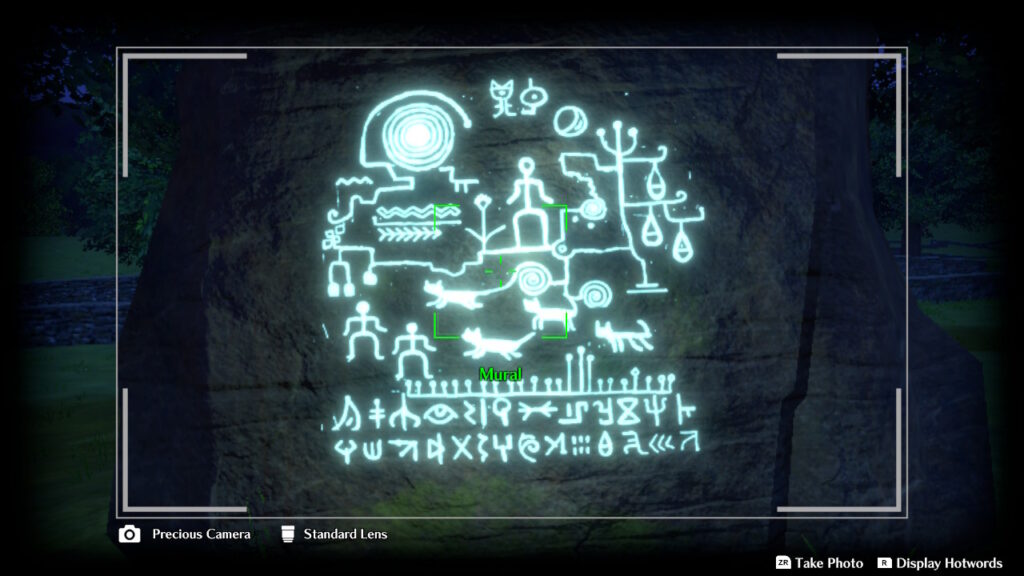
Attacking as the dog is borderline worthless. Unfortunately it’s necessary to hunt in this manner to get meat and hides of larger animals. Dog-Naomi has a very basic attack with no lock-on, and even though the strength of the attacks can be boosted, it’s ultimately just a means to an end. The game would have been better off without this at all, and could better flesh out the farming module instead.
The most important ability that the dog mode has is the powerful sense of smell for tracking. If York had this, he could have found anyone in Greenvale. Naomi can catch a scent from an item that was previously owned by a person of interest, and the trail will always lead to it without fail.
As a cat, Naomi can jump high enough to clear gates, fences, and climb up designated structures. She can also lock-on and pounce on small prey for a easy and quick meal, with the added benefit of instantly skinning her target. Between all the actions in either form, none of it’s particularly polished, which is par for the course of a Swery game. It may not look like much, but it does work for the most part.
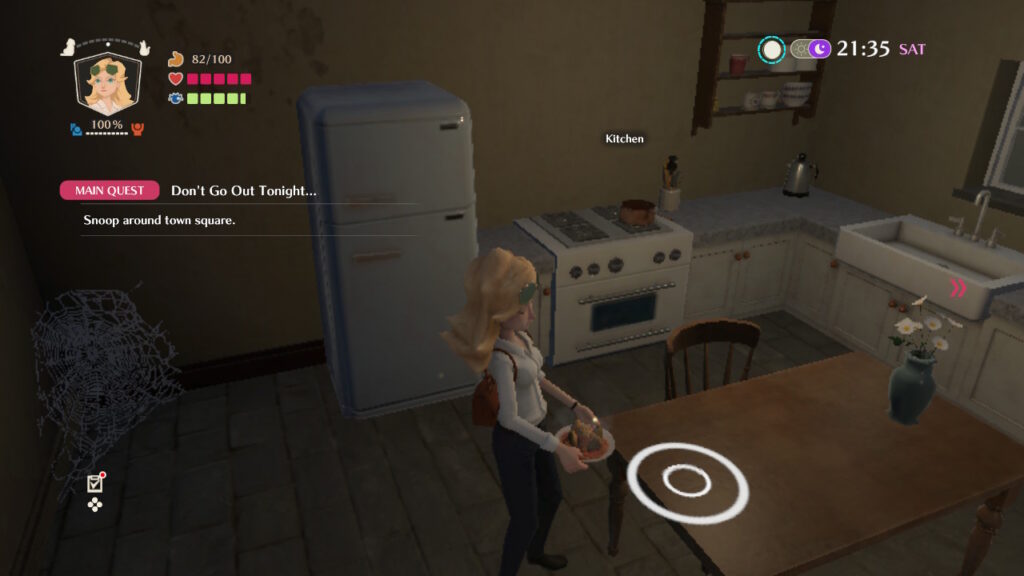
Naomi has other options of getting around the don’t involve transforming into an animal, or lugging her big mom-jeans around the country side. Sheep riding is one of the fastest modes of transportation in Rain Woods. It’s also a great way to really tank the frame-rate hard as she blazes through the landscape, with the Nintendo Switch barely able to keep up.
The sheep raising is surprisingly involved. Not only can multiple sheep be raised, there are many types of sheep, and each one has stats that can be leveled in order to improve their handling, stamina consumption, and speed. Naomi can also shear their wool for resources to have the tailor make clothes. The Good Life is steeped in details like this throughout, that help make it very immersive.
There are lots of stats and factors to keep in mind during play. Factors outside of Naomi’s health parameters such as the time of day, what day it is, and NPC schedule is something that will stimulate the organization part of the player’s brain. Managing all this becomes very involving, and makes up for the sloppy, Swery playability that has become a stain on his track record.
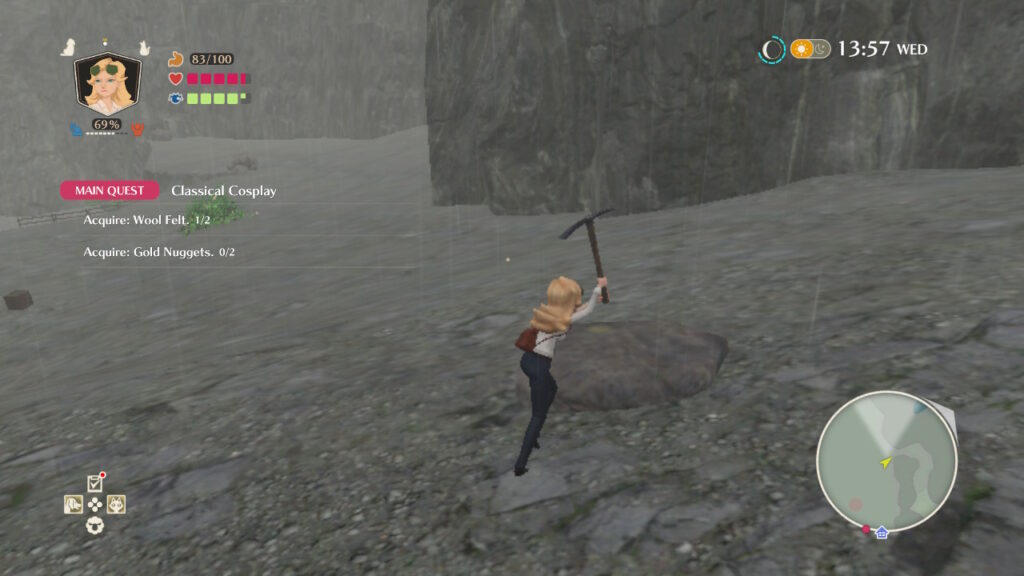
Examples of the lack of attention to quality is mostly seen in animations; where characters snap into position and different poses without interpolation or smooth transitioning. Turning into a cat or dog seems fast at first, but then you realize how long you’ll be doing it a lot. The few seconds it takes to transform will add up to hours due to how often it becomes necessary to switch in order to fully explore an area.
Worse yet is when Naomi mounts on and off her sheep; there is no animation at all. Her character model instantly appears on the saddle, and the running animation for the sheep is also poorly timed to the speed of movement. The effect makes the sheep appear like it’s gliding when turning or trotting.
During cutscenes this happens all the time. One would expect that the choice behind the simplistic and cartoony art style would be to allow for more exaggerated expressions and wild poses with fluid movements. Unfortunately the results are stiffly animated characters who have a limited range of movement. This is disappointing, because as off-putting as the graphics seem at first, the art style does grow on you.
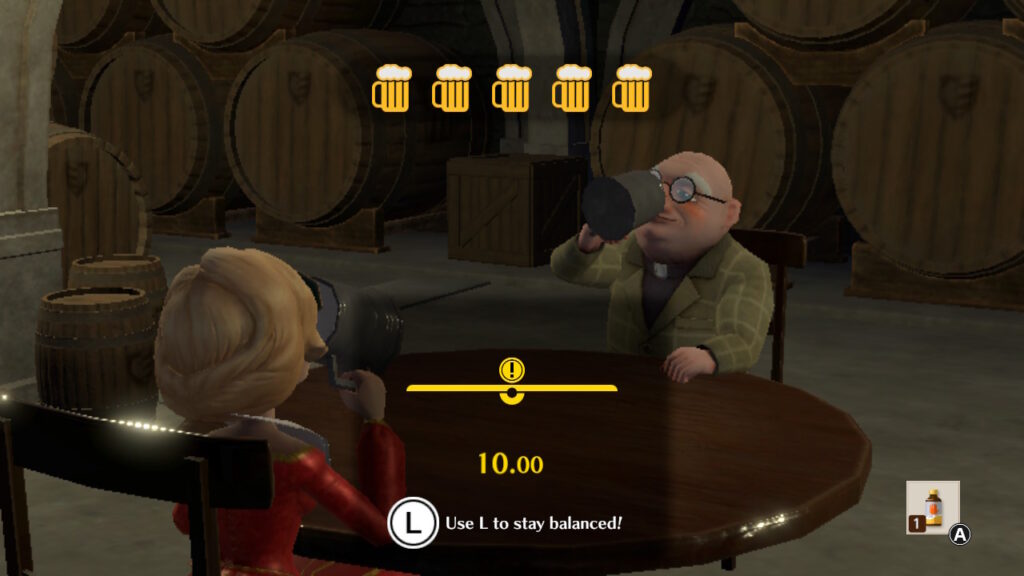
Unity can produce impressive visuals and solid gameplay on Switch. Swery is not a developer who can, but he really did try with The Good Life. Character designs and the off-kilter look of the world makes the world resemble miniatures and small figurines. They’re simple creatures that inhabit Swery’s toy box, and he is smashing his play-things together, telling a very silly story about time travel and a murder mystery.
It may not look like much, but Rainy Woods and the inhabitants are impressively detailed. A lot of the dwellings can be entered, and small nicknacks and personal character accessories are thoughtfully placed to tell a story, and establish a comfy mood. This is something that not many games put the effort into, but Swery and his team really push for this to add a lot of credibility to the world and characters.
The only times when the believability falters is when speaking to generic unnamed NPCs, who only speak about random movie trivia. Swery just couldn’t help himself, and he made every stock NPC be his mouthpiece instead of acting like a real English villager. It’s distracting while you are exploring the countryside, you meet some old guy, and the only thing he says is how awesome Kenneth Branagh is.
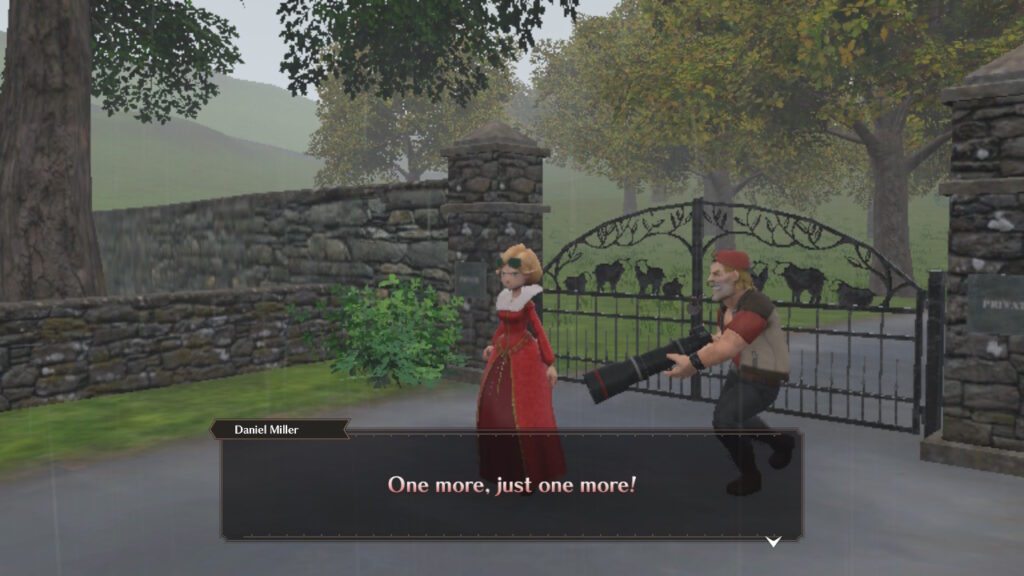
The voice acting is sparsely used, and is mostly relegated to crucial scenes. The actors do a fine job and fit their respective characters. Naomi also is well cast as a smug city slicker who is out of her depth, and grows to be more accepting. The only problem is that Swery got a bit too eager to overuse some soundbites that become very annoying, very quickly.
Naomi shouts the same “YEAAAAHHHH BAAAAYBEEEE!”, for almost everything. At first it was amusing, but it got real old fast. Getting around on sheep and activating the turbo boost makes her say it, and expect to use the turbo a lot to get around. It’s an unusually loud sound file that cuts into your eardrums, and will be used through out the entire game, including cutscenes.
The music is a highpoint for The Good Life. It’s usually easy going, and puts the player in the English country bumpkin mindset. Most tracks feel airy and light, sometimes sounding like music from Wallace and Gromit. Silence is used to great effect; usually to reflect after major events, and to emphasize the sounds of nature.
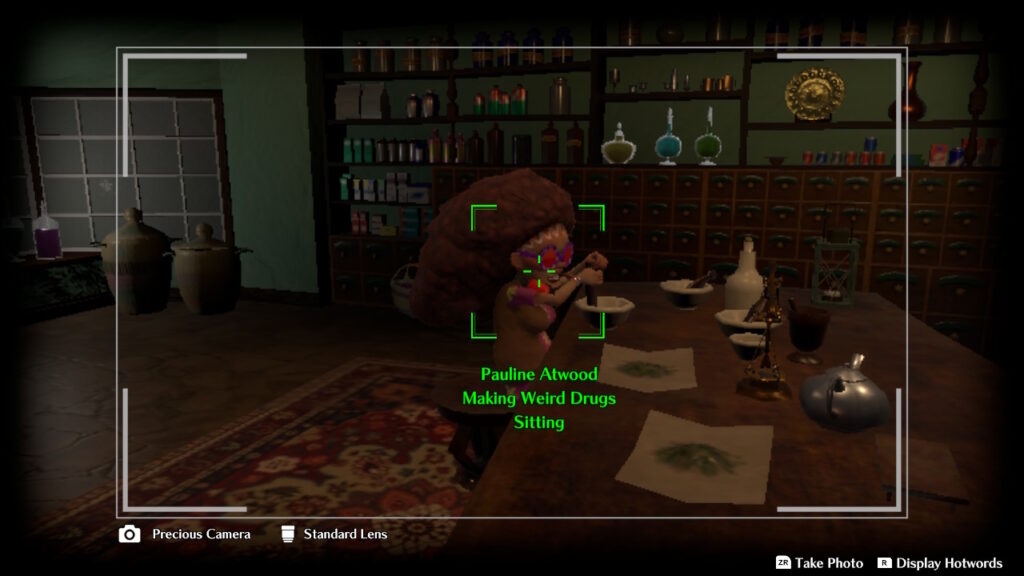
The Good Life is seemingly a very personal game for Swery and his team. It may be rough around the edges, but it’s dripping with passion and ambition. There’s a higher standard of quality present than there was with his last few games that felt like he was not interested in making.
Deadly Premonition 2: A Blessing in Disguise felt like it was made out of obligation due to the cult popularity of the first game, which was a legitimate curiosity. It does not feel like it was made with passion, and that the developers rushed it. The same is felt with The Missing, which also felt like it made quickly and half-heartedly, to earn some money for establishing White Owls as a developer.
None of this feels like it applies to The Good Life, which has a lot of soul poured into it. Like Deadly Premonition; being charmingly earnest is what makes Swery’s games enjoyable, despite their obvious flaws and lack of production values. A Blessing in Disguise and The Missing may be the fraudulent cult games in Swery’s litter, but The Good Life is the real deal, and will please fans of his work.
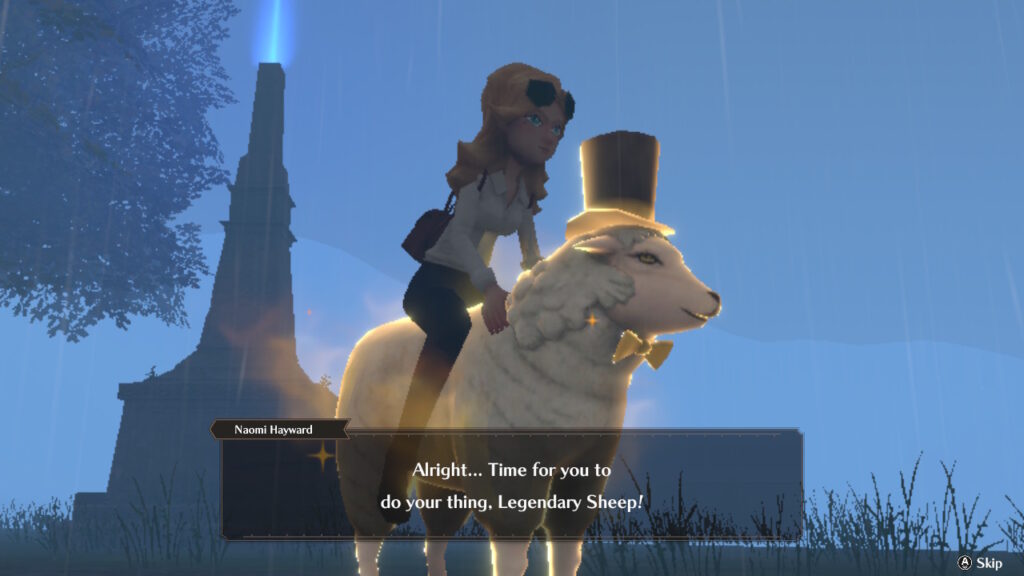
As enjoyable and weird as The Good Life is, it’s not a game for everyone. Most of the gameplay revolves around fetch quests and taking pictures, with a few mini-games here and there. The life-sim mechanics will seem like busy work for those who just want a story.
The Switch version naturally has some technical issues regarding the frame-rate, and it can crash suddenly with no reason. Locking up in menus is also possible, and plenty of progress can be lost if players don’t save often, or haven’t met a checkpoint in a while. Compounded with the laid-back gameplay and sloppy presentation, it can look like the worst game ever to some people.
Looking past the obvious flaws in The Good Life, players will find a very unusual and engrossing mystery, with a lot of depth to the gameplay and witty characters. It’s a very personal game that presses the player to slow down and take it easy; to chill out and enjoy life.
The game is about appreciating the simple things; like a pair of worn-out but comfortable socks that you keep anyway. Not everything makes sense, but what is life without a little whimsy now and then?
The Good Life was reviewed on Nintendo Switch using a review code provided by PLAYISM. You can find additional information about Niche Gamer’s review/ethics policy here.